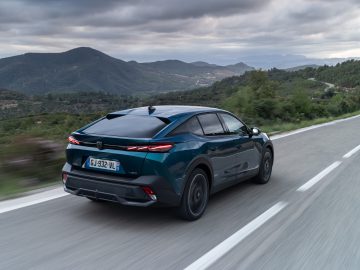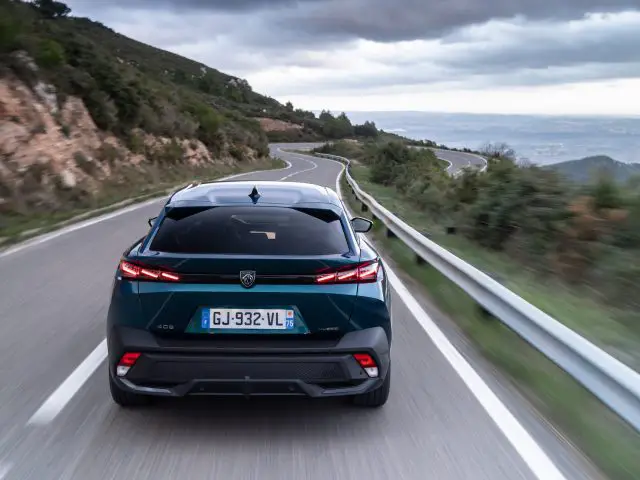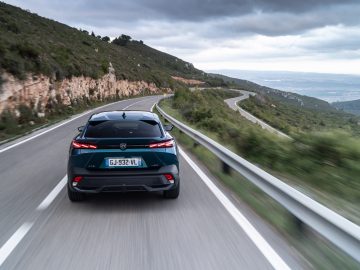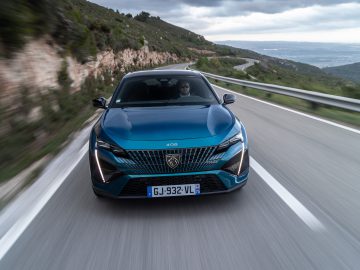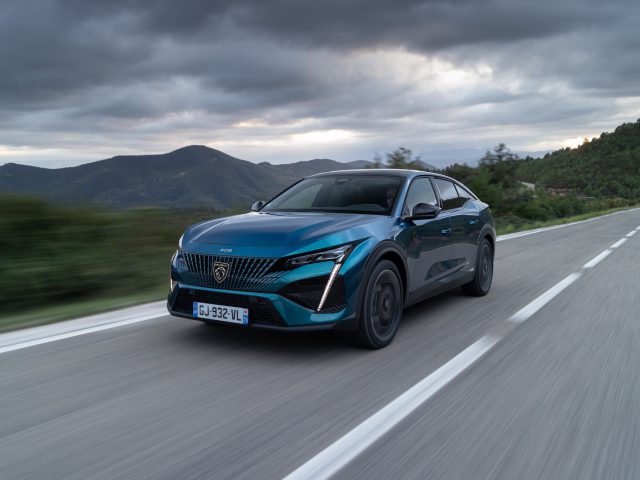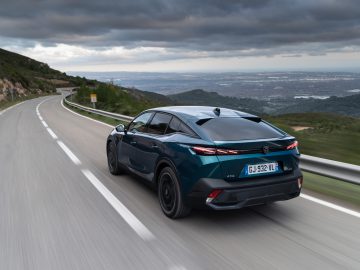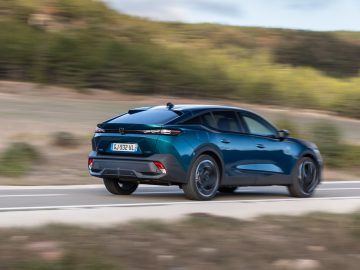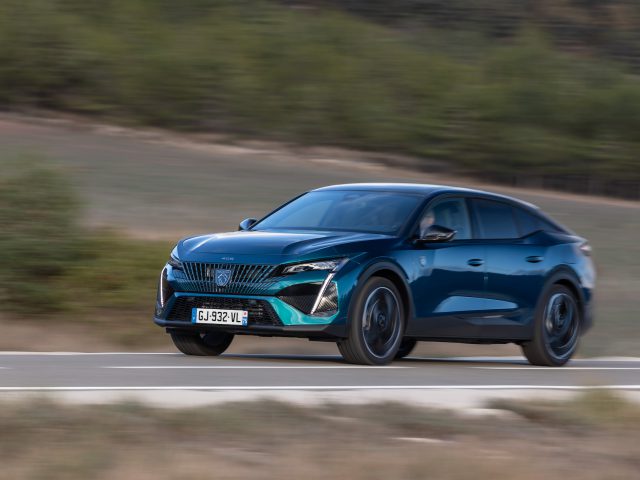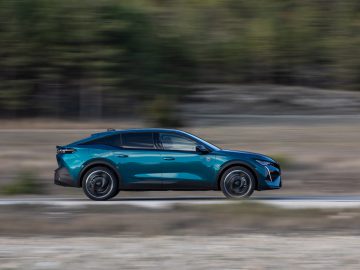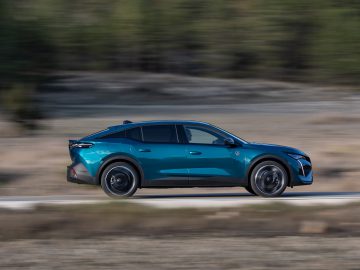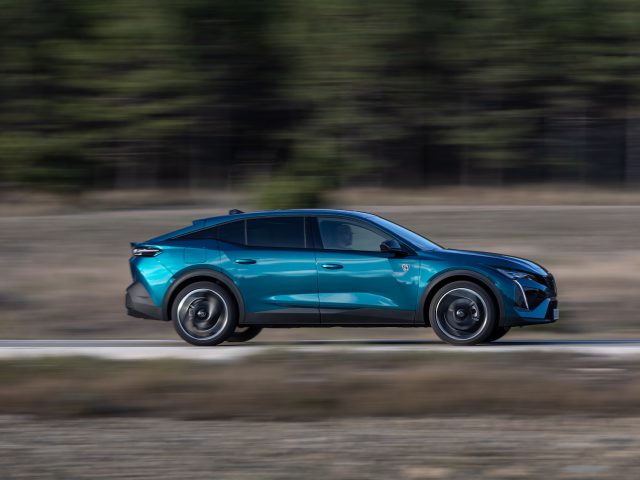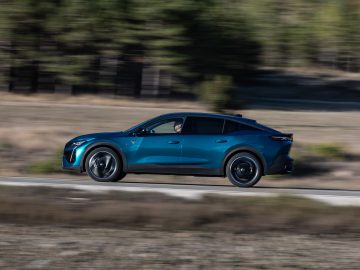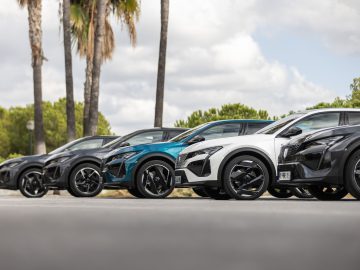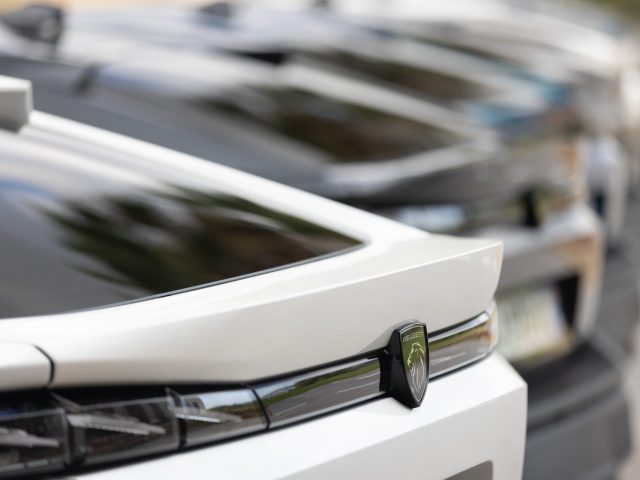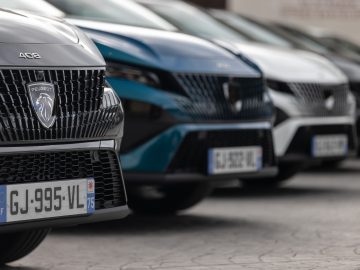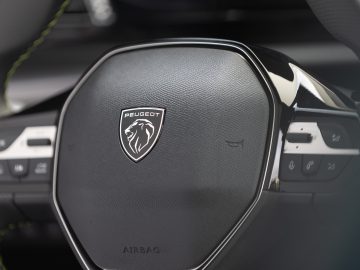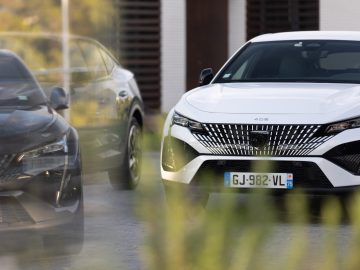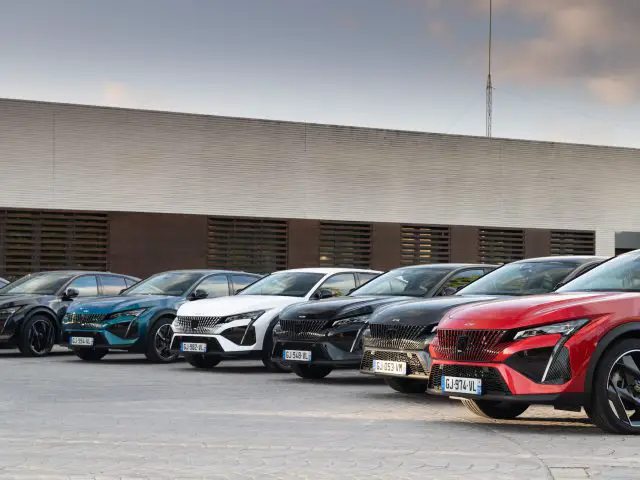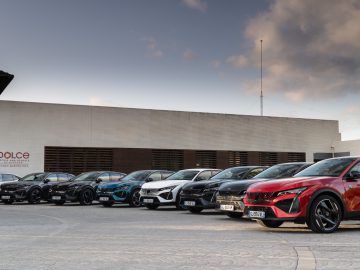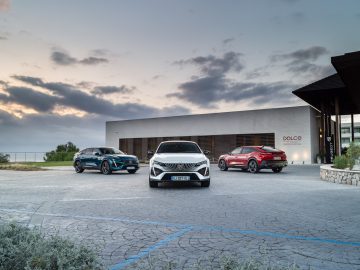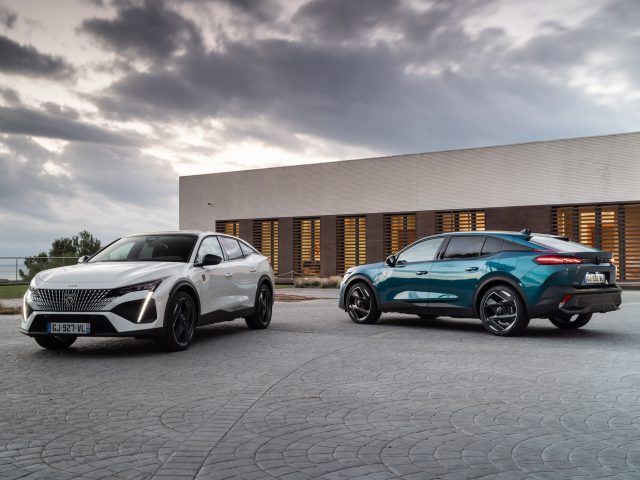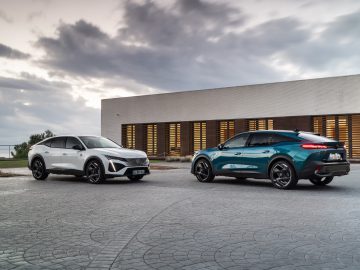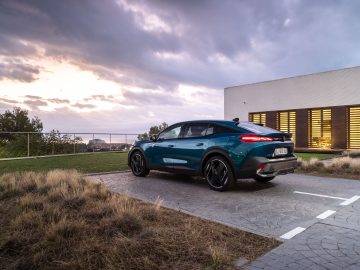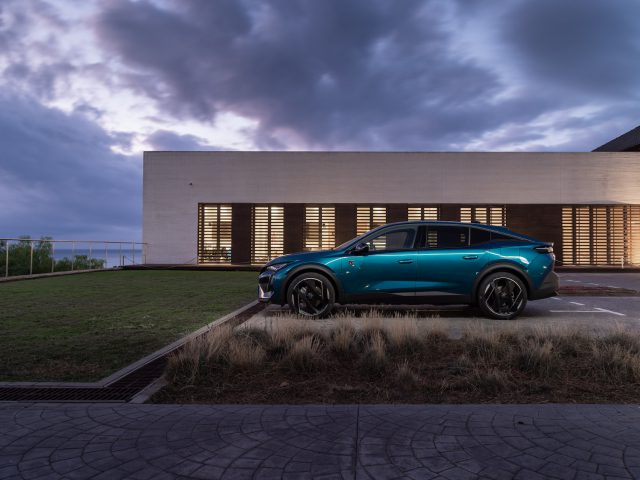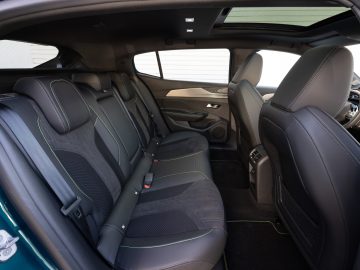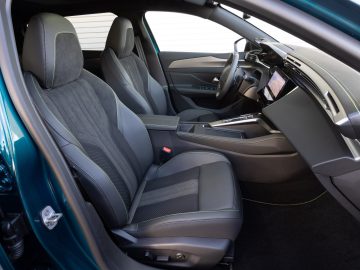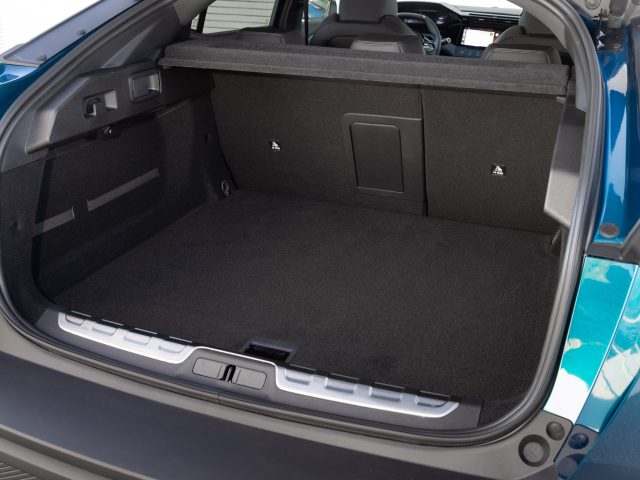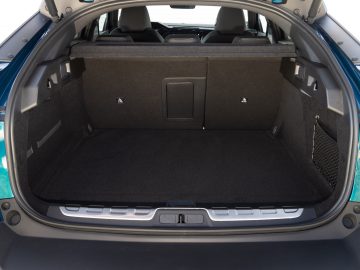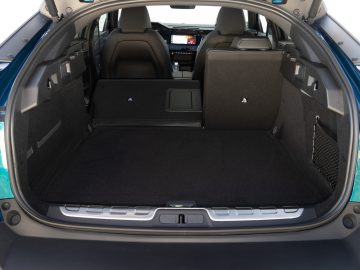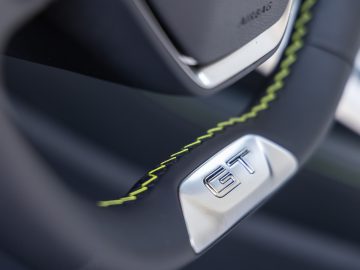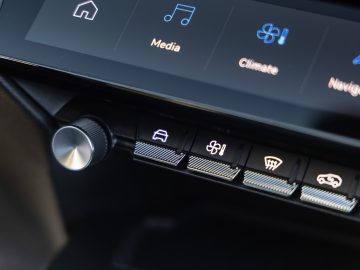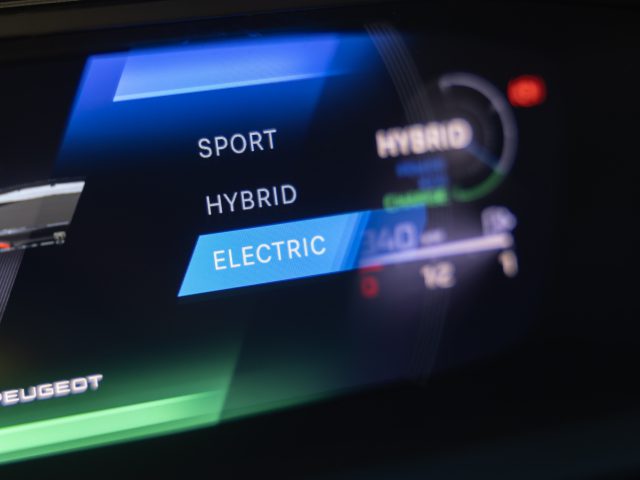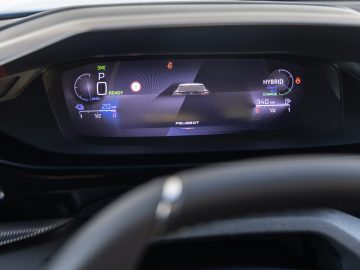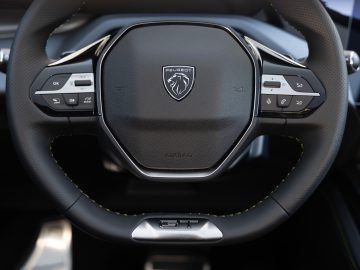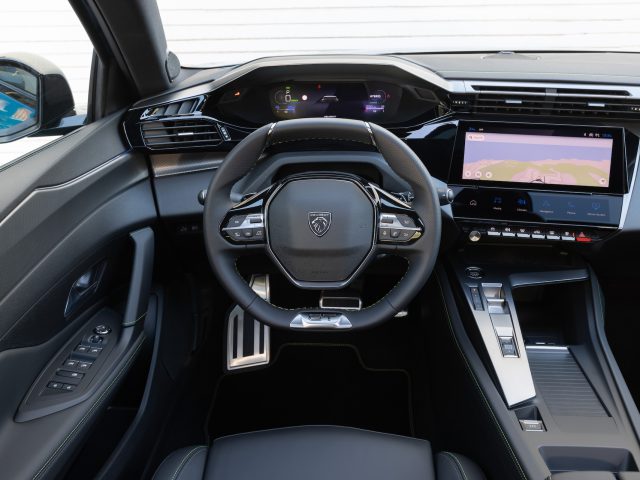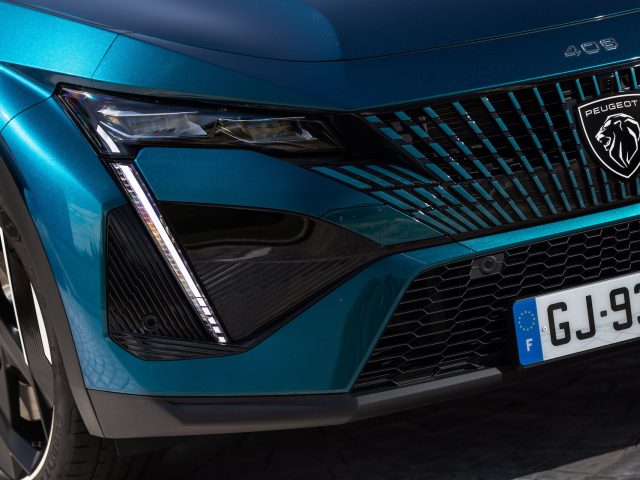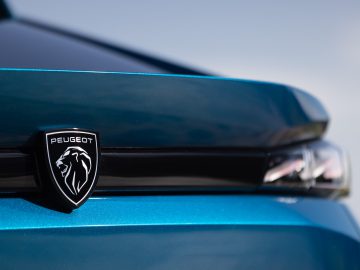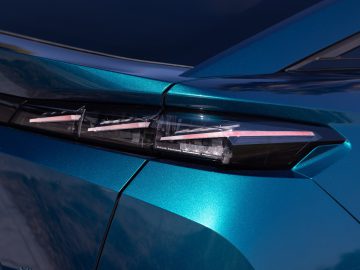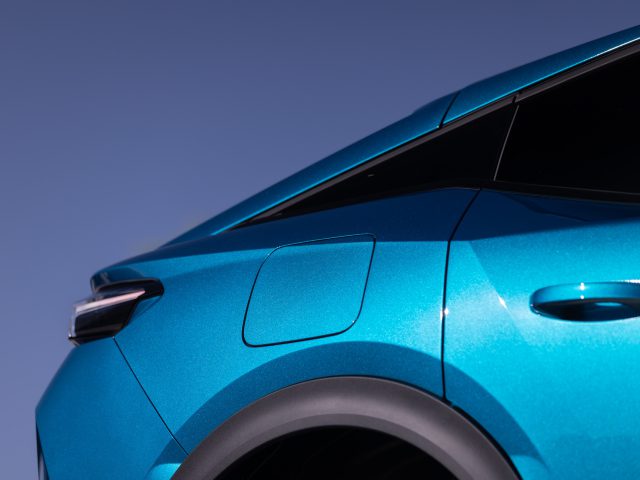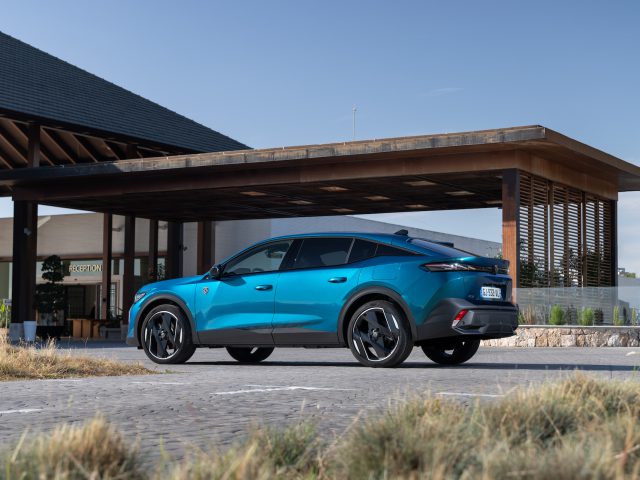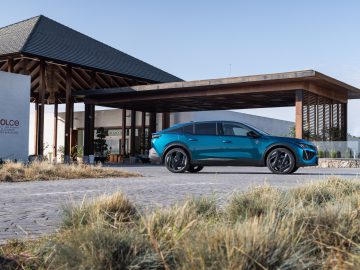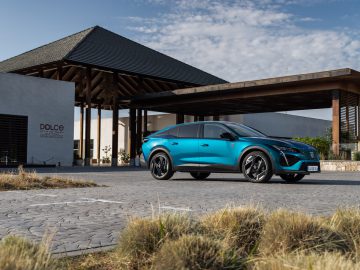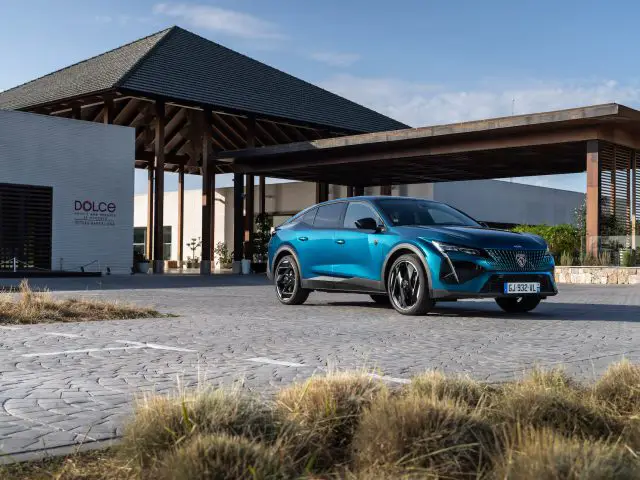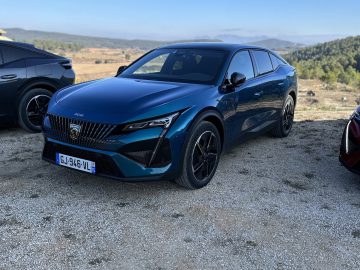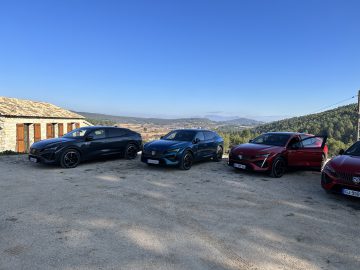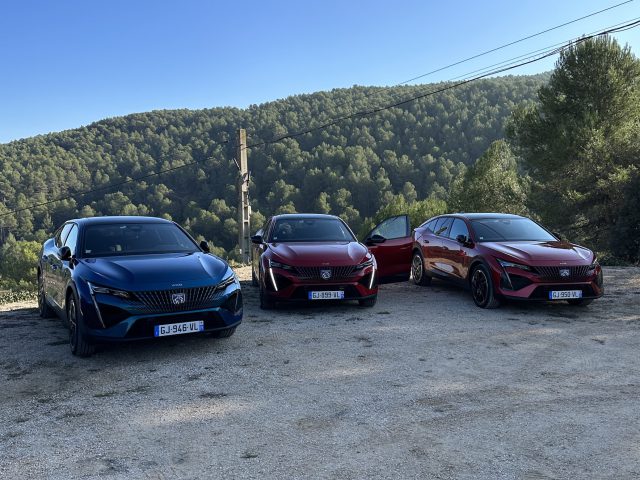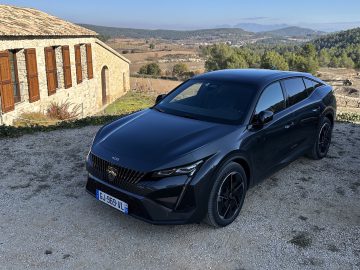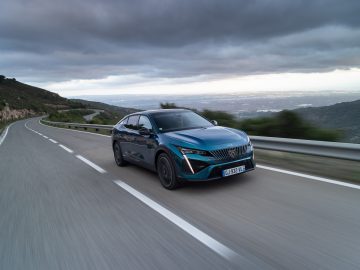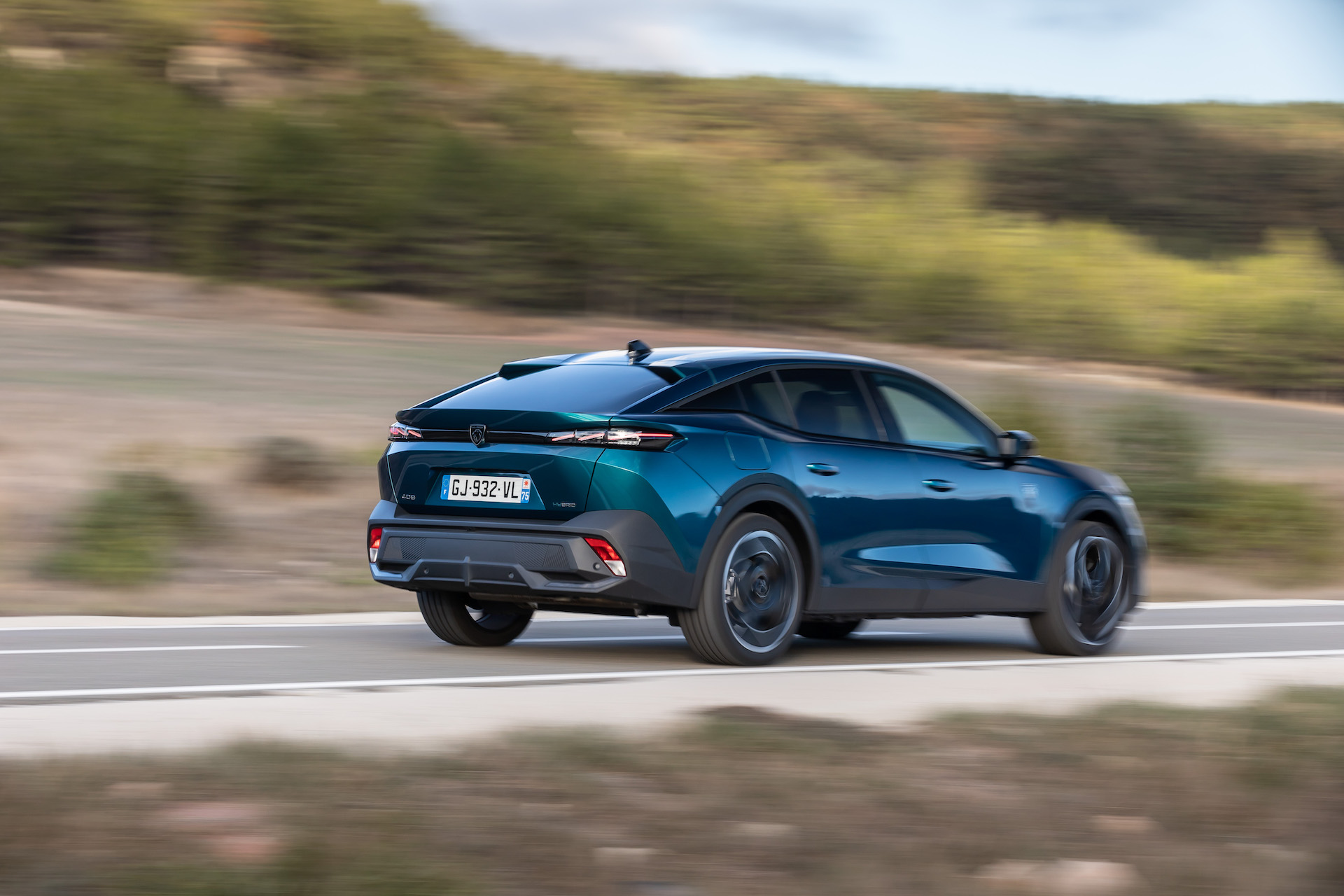Review – Peugeot 408 Plug-in Hybrid (2023)
Crossovers and SUVs
“Asjemenou?”, Loekie the Lion always says when he is full of wonder. But we too now make the same observation upon seeing this Peugeot 408. Crossovers and SUVs have been unprecedentedly popular, for years. And what does Peugeot come up with? A fastback sedan on high legs. Does Peugeot know more than other manufacturers? In other words, does Peugeot have gold in its hands with the new Peugeot 408? Time will have to tell. At least the French are trying something new, something Citroën is also doing with its C5 X or e-C4 X.
Gasoline or plug-in hybrid
Technically, the Peugeot 408 is based on the 308 and 308 SW. For this reason, powertrains are also adopted one-to-one. Engine offerings include a 130-hp gasoline engine and two plug-in hybrids with 180 and 225 hp, respectively. The plug-in version with 180 hp is expected to become the most popular engine variant in the Netherlands. Incidentally, Peugeot also supplies a 215-hp THP gasoline version in some countries, but not in Europe. All engine versions have an eight-speed automatic transmission, the EAT8.

An electric Peugeot 408 also on the way
In the course of 2023 or early 2024, Peugeot will further expand its 408 offering with an all-electric variant: the Peugeot e-408. That is expected to get the same powertrain as the e-308 and the e-308 SW. So count on an all-new 156 hp (115 kW) electric motor with 260 Nm of torque. A 54 kWh battery (51 kWh usable) should provide about 400 kilometers of range (WLTP).
Peugeot 408 Plug-in Hybrid – ASJEMENOU? – REVIEW – AutoRAI TV
Peugeot 408 prices
In short: a gasoline version, two plug-in hybrids and a BEV. Of the first three powertrains, we already have prices. The 130 hp gasoline comes from 41,490 euros, the 180 hp PHEV costs a minimum of 46,160 euros and the plug-in version with 225 hp comes from 49,660 euros. These prices are effective Nov. 1, 2022, so brace yourself for price changes. By the way, don’t be fooled by Peugeot, as the price lists refer to the PHEVs as HYbrid. So it’s all about plug-in hybrids.
225-horsepower plug-in version is particularly fast
Peugeot made only 225-hp plug-in hybrids available during the 408’s international introduction. A fine powertrain with a nice interplay between the gasoline and electric motor. The system torque of 360 Nm is particularly impressive during intermediate accelerations, allowing you to sprint from 60 to 120 km/h at lightning speed, useful for overtaking and merging on the highway.
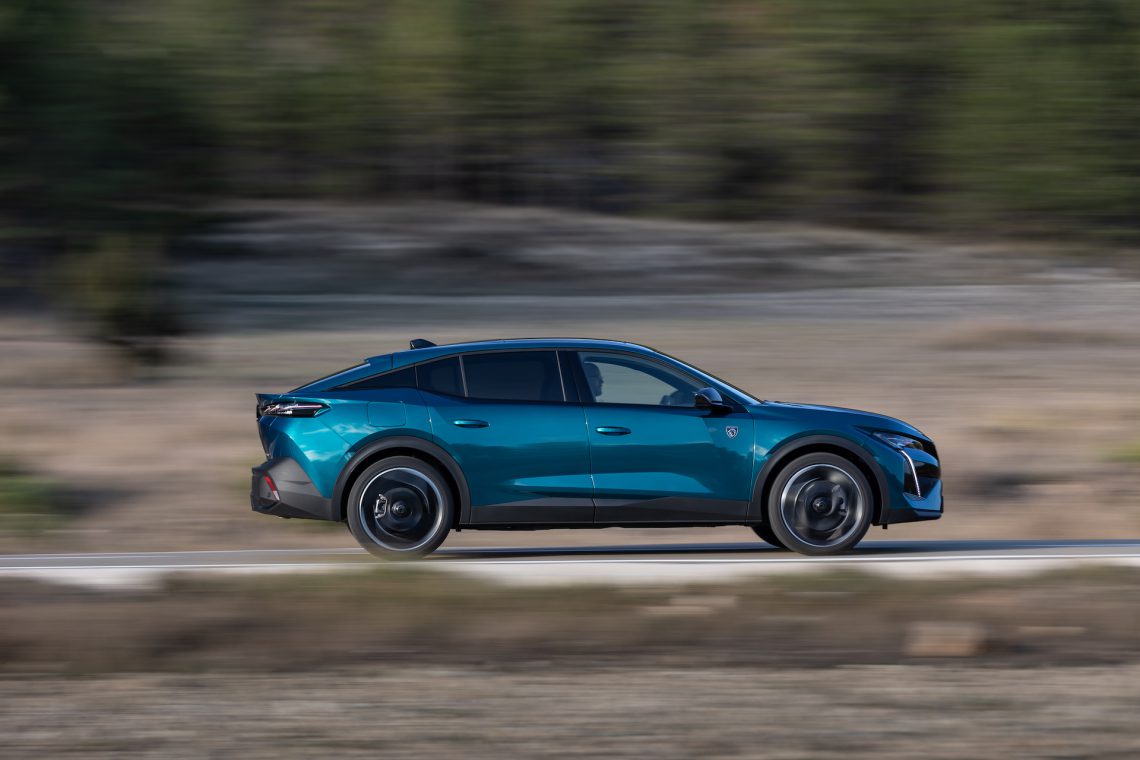
Electric driving: the numbers
Peugeot mentions a WLTP electric range of about 60 kilometers on paper, but you’re not going to get that in practice. Rather, count on about 40 kilometers of electric mileage. In particularly chilly conditions in Spain with an outside temperature of about 7 degrees Celsius, the on-board computer noted an EV range of 34 kilometers with a full battery. In electric drive mode, by the way, the top speed is 135 km/h. In Sport mode, the powertrain is fiercest. The gasoline and electric motors then show their best side.
Charging the Peugeot 408
To really drive economically, you obviously need to charge the battery pack properly, otherwise the advantage of a plug-in hybrid powertrain is quickly lost. Peugeot will soon supply a 3.7 kW on-board charger as standard. The 7.4 kW on-board charger costs extra (400 euros), but is standard on the First Edition of the 225-hp PHEV. This 7.4 kW on-board charger reduces traction battery charging time to approximately 2 hours and 30 minutes when combined with a 22 kW charging capability.
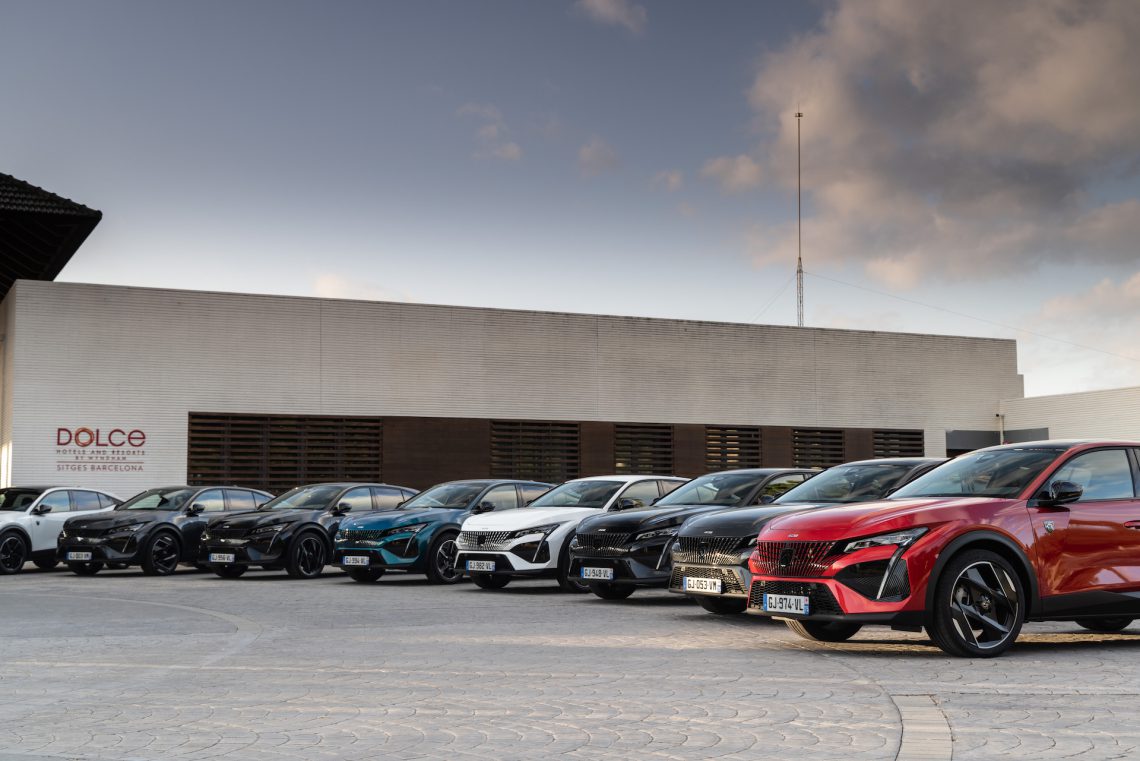
‘Intermediate solution’
Although the plug-in hybrid performs extremely well in practice and is also quite interesting from a business standpoint, a feeling remains that this is only an “interim solution” with an eye on the battery-electric version. Besides, the 408 PHEV is not very cheap either, as you noticed from the prices. Peugeot does position the 408 at the upper end of the C-segment, for people who want to step forward in terms of space or are looking for originality. In view of those two issues, the 408 stands firm. Because the car looks very special and is also remarkably spacious.
The interior space
The Peugeot 408 is based on the EMP2 (Efficient Modular Platform) platform. It has a length of 4,690 mm and a wheelbase of 2,787 mm. As a result, the 408 is particularly spacious, even in the rear. Despite the sharply sloping roofline, even with a height of 1.85 meters, you can still sit comfortably in the back, even with the presence of a panoramic roof. In the case of the gasoline version, the trunk has a capacity of 536 liters to a maximum of 1,611 liters when the rear seatback is folded down. The plug-in hybrids have a smaller luggage space due to the presence of a battery pack: 471 liters or even 454 liters if you select a Focal HiFi sound system.

Peugeot i-Cockpit
The car’s dashboard faces the driver. The interior has a cozy ambiance and is constructed of fine materials. Of course, Peugeot also applies the i-Cockpit interior concept in the new 408, consisting of a compact steering wheel with a – in this case – digital instrument cluster with 3D interface above it. Depending on body shape and height, this i-Cockpit provides a fine seating position or you will have to make a concession by adjusting the steering wheel a little lower so you still have a good view of the gauges. A little test sitting at the dealer will do wonders to see if you can find a nice seat. The steering wheel of the new 408 fits the hand perfectly and is ergonomically shaped and heated (optional). It also houses the switches for the multimedia system (radio, phone) and some driving assistance systems.

Driving assistance systems of the Peugeot 408
The car has six cameras and nine radars and a total of 30 driving assistance systems, think adaptive cruise control with Stop & Go function, Long Range blindspot monitoring (75 meters), Rear Traffic Alert and even Night Vision. The latter warns of animals, pedestrians or cyclists on the road before they become visible in the beam. A complete security package of which only part can be disabled. For example, the adaptive part of the cruise control is not disengageable, leaving you to rely on a speed limiter if the adaptive part is momentarily not desirable.
i-Toggle
A striking feature in the interior of the 408 is not only the hefty infotainment display, but especially the so-called i-Toggle switch panel below it with hotkeys for such things as music, phone and navigation. Saves searching the infotainment system anyway. In fact, some menus are quite hidden. Turning on the seat heater, for example, cannot be done at the touch of a button. You have to go through three screens to operate this feature, which is too distracting on the road. There is room for improvement here. Compliments are due to Peugeot for the AGR comfort seats. These sit wonderfully and offer plenty of lateral support.
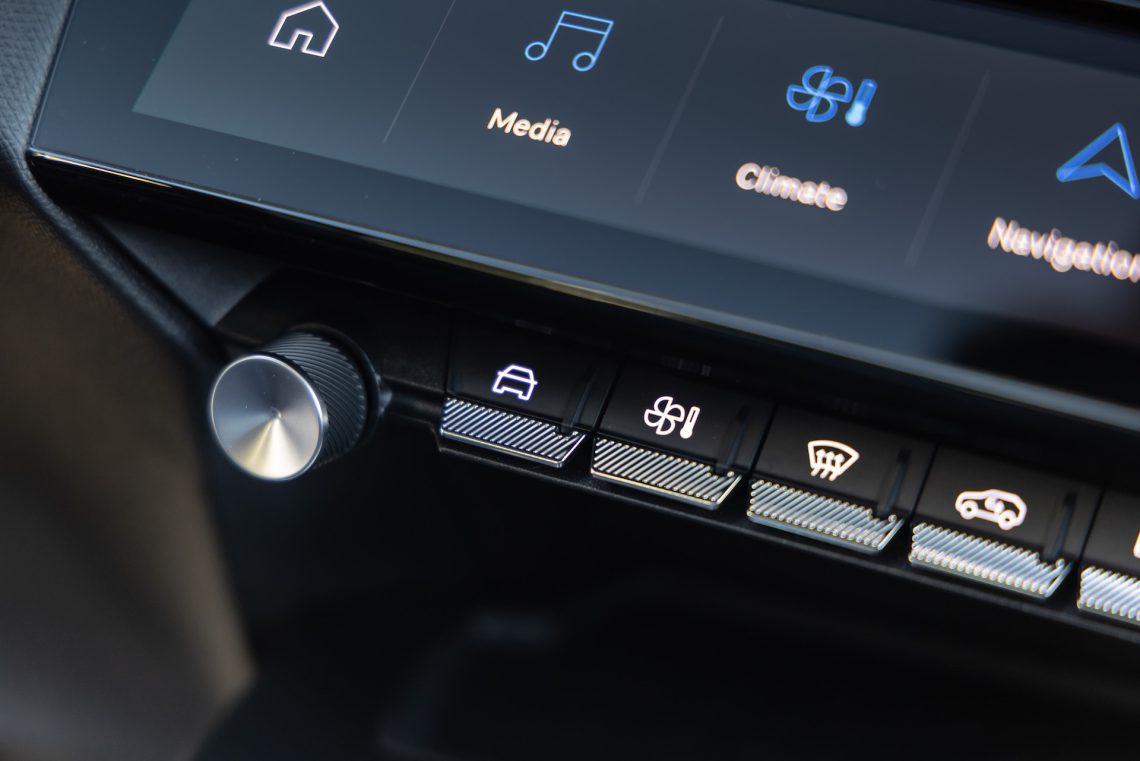
Conclusion review Peugeot 408
Refreshing in styling, surprising in interior space, the Peugeot 408 manages to score the necessary points. Especially in a catchy color scheme, such as Obsession Blue or Elixir Red. Business drivers can also breathe easy, as Titanium Grey, Pearl White, Black Perla Nera or Artense Grey have also been considered. White, gray and black, so nice and safe. As far as we are concerned, the Peugeot 408 is allowed to stand out nicely so that the car really stands out from every angle.

Very quiet!
Especially striking are the optional 20-inch Monolithe wheels in a special design, although the 19-inch ones are our preference, because just a little more comfort and less rolling noise. Sounds Peugeot manages to keep sounds well out of the car because the French car brand installs extra-thick side windows. As a result, the 408 is surprisingly quiet, which gives peace of mind. Moreover, the Focal sound system comes into its own even better. But amazement is there anyway. In a positive sense. Because the Peugeot 408 knows how to loosen tongues.
On the market in 2023
The new Peugeot 408 will appear on the Dutch market in early 2023. Peugeot is building it for the European market first in France, in Mulhouse. Shortly thereafter, production is started in Chengdu, China, for the local market.


